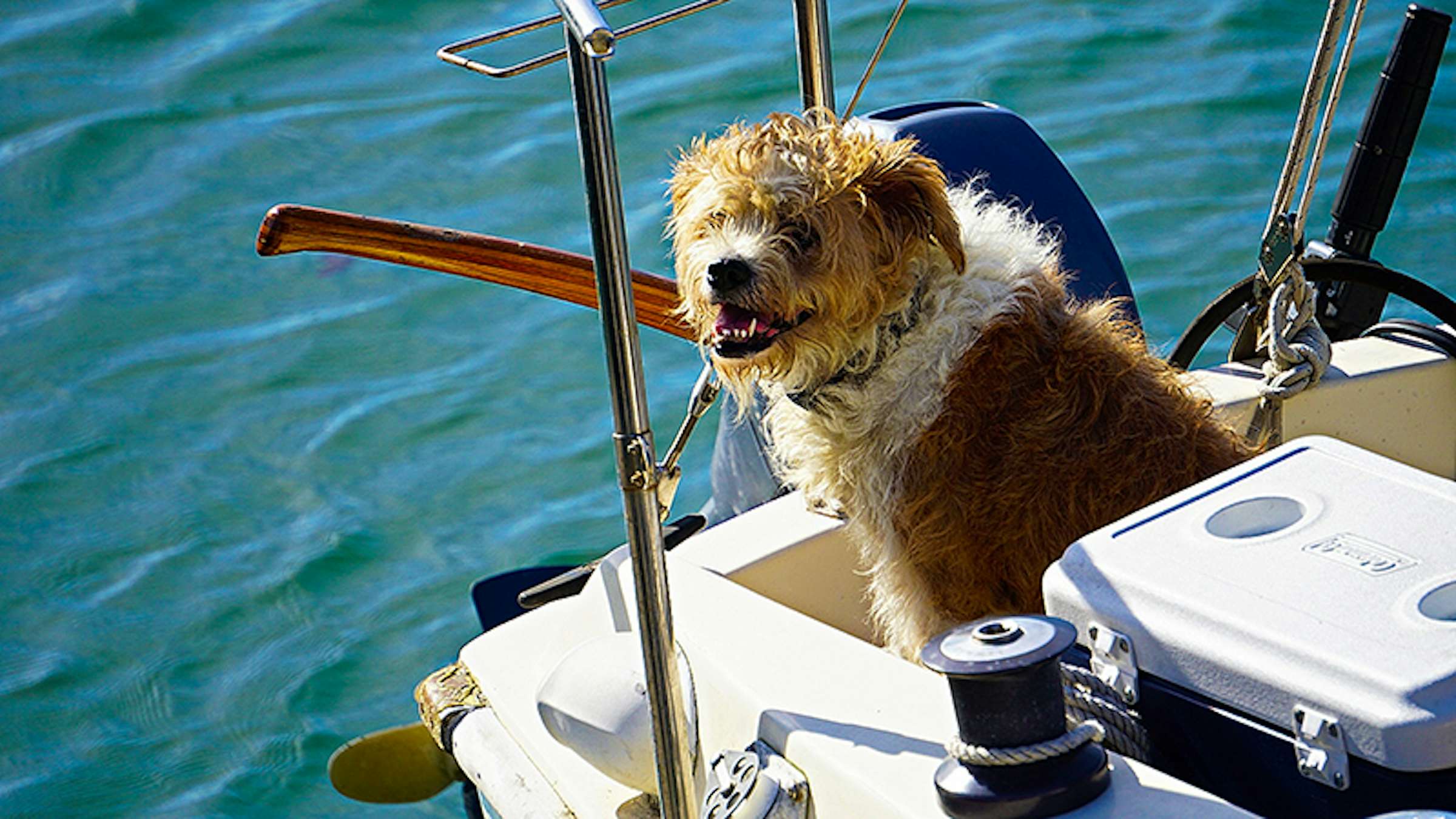
Boating with pets
How much fun would it be to take your beloved pet out boating with you? It's lots of fun if your animal is enthused and you have prepared for this eventuality. You should take just as much precaution to ensure your four-legged friends are as safe as your human pals as you get underway.
The Discover Boating website has some great information on the subject, offering some tips for those considering initiating their pets to the world of boating:
- Keep plenty of fresh drinking water available (and do not encourage them to drink from the lake or sea due to contamination possibilities)
- Provide a shaded area so as to avoid harmful, excessive sun exposure
- Protect their feet - dogs, for example, absorb heat through the pads on their feet and boat surfaces can get very hot in the sun
- Give your pet a chance to get acquainted with the boat while it is on the trailer or at the dock. If they feel they are in a familiar place, they will be less likely to be stressed the first time out on the water
- If the pet in question is a dog, to avoid any unnecessary accidents onboard walk it before boarding; if the boat surface allows, you may wish to train it to go in a specific spot
- Keep your first outing short, to let your pet get used to the boat movement
- If your pet requires medication - have that on board - you need to be prepared for anything.
Furthermore, dog owners may wish to invest in a canine lifejacket (doggie lifejackets are available at most boating stores and pet shops). And, while it may sound surprising to some, applying sunblock to dogs can be a smart thing to do, especially to light-coloured and thin-haired ones susceptible to sunburn. Sunscreen should be applied on the dog's ears, bridge of nose, belly and inside the hind legs, at least (basically where the skin shows) and check with your vet regarding which block to use. Some vets recommend using baby sunscreen with SPF 30 (or higher) for your pet. Avoid sunblock that includes zinc oxide as this is toxic if licked.
As the Hillspet website acknowledges, dogs and boats can be a fun combo, but bringing dogs on a boat requires special precautions.
“After all, while you can talk about boat safety in terms the other passengers can understand, you can't simply use words to explain to your dog how to stay safe on your boat.
“Instead, you'll have to teach your dog safety precautions. He might need to learn everything from how to swim to the best way of getting on and off the vessel.”
Boating with pets brings with it many positives, say those at Formula Boats. Dynamic outdoor play opportunities, new sights and sounds, more quality time, increased security, and connectivity with other boaters, form that list of positives.
As the Formula Boats website states, many pets enjoy being on the water and will appreciate the extra time spent with their family.
“Bringing dogs on a boat is usually easy, and some cats may also enjoy the experience. (Cats are more easily adaptable to new environments than you might expect. Your feline friends can also protect your boat from smaller invaders like mice and other unwanted pests.)
“If you have birds, reptiles or other small pets, it may be possible to bring them boating as well, just be sure you can provide a safe, comfortable environment for them. If it’s not possible to provide this safe space, or if you have certain exotic species of pets, it may be best to leave them at home.”
This source of information also includes the need to be aware that your pet may experience sea sickness - cats especially are prone to motion sickness on a boat. And it recommends having an animal overboard plan as accidents of all sorts can happen on board.
“For safety, you should plan to cut the motor immediately in the event of an overboard animal. Go to the location of the boat where the animal jumped off and call its name.
“You should outfit your pet with an appropriate life jacket, with handles for lifting them out of the water, and have a large net on the boat for scooping smaller breeds. If you have a cat on board, bring a strip of carpet to hang over the edge of the boat — the cat may be able to claw at the carpet and climb back aboard.”
And finally… the best place for your pet to be when onboard and you are motoring? The folk at Hillspet say, if you have a pup on board, have him lying down beside you or on the floor of the boat.
“It might also be a good idea to keep the leash on him, so that if a fun and exciting sound or smell gets his attention, you will have the ability to help control his movements and keep him safe.”